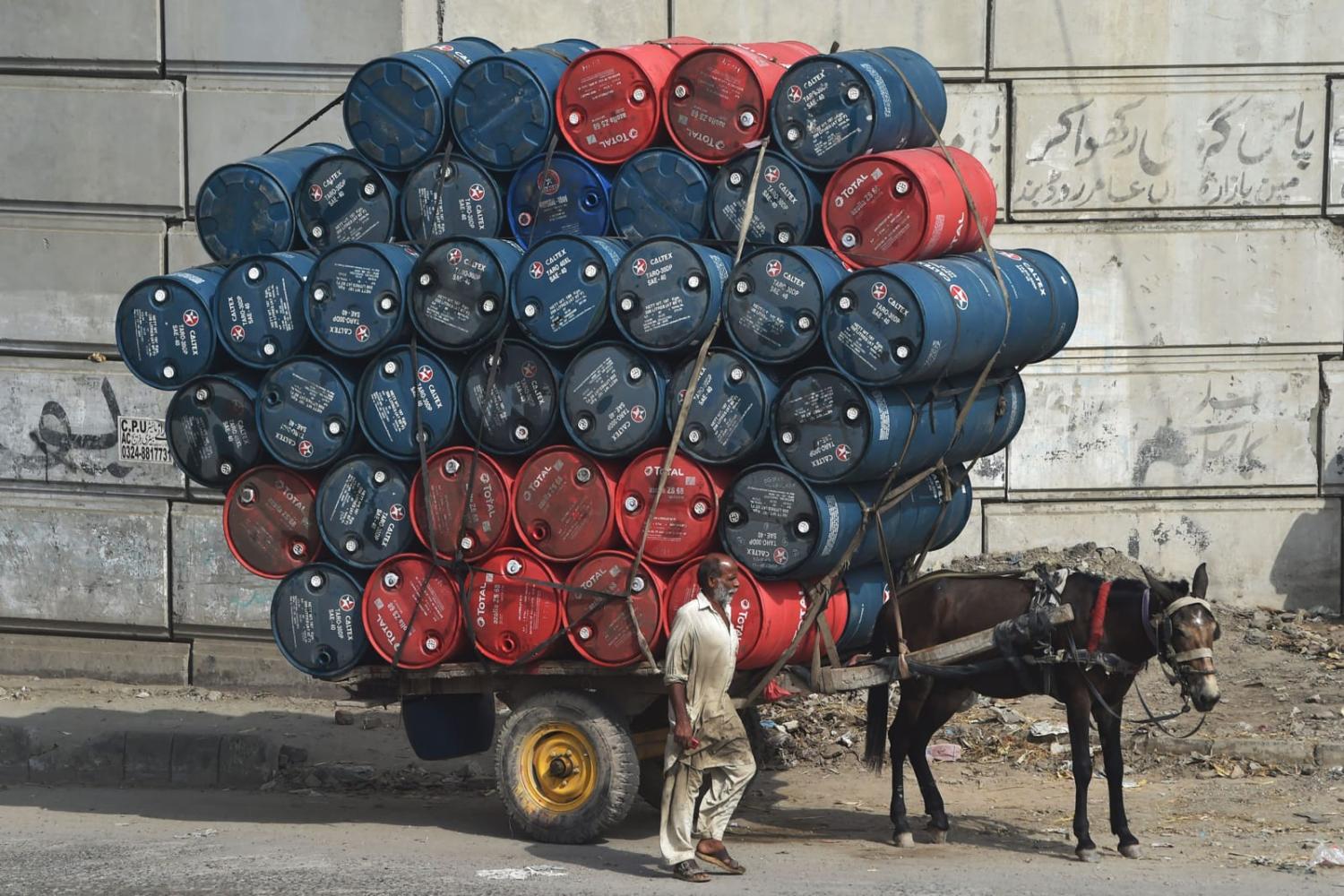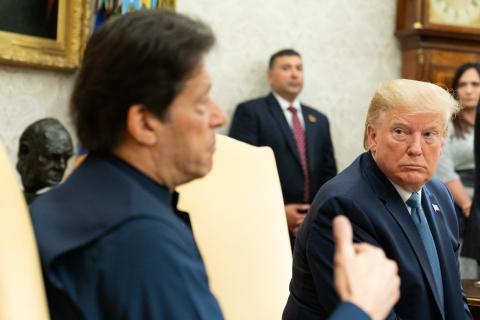News of the arrest of former prime minister Imran Khan has roiled Pakistan in the past day, which is the latest development in a long-winding saga. Much of the instability in the country comes back to the struggling economy. Beyond spiralling debt, Pakistan is finding it hard to pay for its import bills, most notably oil, which costs $18 billion annually.
In a bid to escape this predicament, Pakistan’s government has pursued the option of importing oil from Russia, itself under sanctions following the invasion of Ukraine. Pakistan’s effort finally materialised a few weeks back when it placed the first order to import Russian oil. As tempting as the prospect of Russian oil imports might be for Pakistan, it’s not without challenges.
Pakistan has initially placed an order for the import of 100,000 barrels of oil per day, roughly two-thirds of the country’s total oil imports. Pakistan expected to receive the first shipment in mid-May, according to the Minister of State for Petroleum Musadik Malik. Islamabad and Moscow are tight-lipped about the financial details of the agreement. However, it was leaked to the press that the price per barrel will be less than $60, which is the cap set by G-7 countries for Russian oil.
A cursory look at the deal hints at major savings for Pakistan. Bulk oil is presently imported from Saudi Arabia, which uses the Arab Light price basket, so valued at closer to $80 per barrel. Should Pakistan secures a far cheaper deal with Russia the savings can translate into huge economic relief, particularly at a time of historically high inflation.
But the potential benefits face four significant hurdles.
Firstly, this deal still runs the risk of US sanctions if the price per barrel agreed between Pakistan and Russia is not made public. Russia does not want to reveal this information as it offers different rates to different countries and does not want to lose bargaining power by revealing what Pakistan has paid. US pressure on Pakistan to reveal the price would leave Islamabad in a predicament. But given the country is not as close a partner with the United States as it was previously, the threat of sanctions may be weighed differently.

The second challenge is that Russia will only sell crude oil to Pakistan, unlike the refined oil sold by Saudi Arabia. This presents a problem. Additional refining costs about $4 per barrel. At the same time, Pakistan’s refineries are not accustomed to refining the hard Russian crude oil.
Moreover, Russian crude oil produces 50 per cent furnace oil and 32 per cent diesel, as compared to Arabian oil which produces 45 per cent diesel and 25 per cent furnace. This detail is significant in the context of Pakistan’s oil consumption pattern. Diesel, used for transportation, makes up 39 per cent, while furnace oil, used for power generation, makes up just 15 per cent. As a result, Pakistan will end up with more furnace oil than it needs after the Russian oil imports, which will erode the cost-saving benefits of this deal.
The third challenge is the higher transportation costs for the import of Russian oil. Pakistan’s existing oil imports from the gulf come via the port of Dubai, roughly 1,300 kilometres from Pakistan’s Karachi port. The nearest Russian seaport 8,000 kilometres away. It’s hard to put a figure to transportation costs, however, the oil experts I spoke with claimed that transportation costs of Russian oil to Pakistan will be at least three times higher than Arabian oil. This cost again will eat into the expected savings that Pakistan plans to make importing per barrel of oil.
The fourth challenge again comes back to the state of the economy. Pakistan does not have the required foreign exchange reserves to pay Russia for its oil. Moscow does not want payment in US dollars, which must be a sigh of relief for Islamabad, given its dollar reserves are just $4.46 billion. But Pakistan also does not have enough reserves of the Russian rouble, the Chinese yuan, or UAE dirham, which are the three currency options offered by Russia. The only plausible alternative is for Russia to sell oil to Pakistan on credit, with repayment expected most likely in the fourth quarter of this year. This is hardly a sustainable solution. Pakistan is struggling to repay its existing debts and is unable to get International Monetary Fund’s approval for further loans. Russia, meantime, has its own economic stress.
So in the end Pakistan’s oil deal with Russia might not be feasible, despite what the government claims. With an election looming the government is eager to sell a message of recovery. But it’s possible that Russia might not continue to prop up oil supplies if Pakistan can’t honour any line of credit. It’s too early to celebrate at the petrol pumps just yet.

